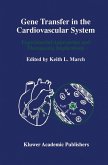Heart disease is the leading cause of death in developed countries. Recent experimental advances featuring cellular, molecular, and genetic tools and technologies offer the potential for new therapeutic strategies directed toward remediation of inherited and acquired heart diseases. Whether these recent basic science advances will ultimately translate to clinical efficacy for patients with heart disease is unknown and is important to ascertain. Cardiac Cell and Gene Transfer: Principles, Protocols, and Applications is designed to provide the reader with up-to-date coverage of a myriad of specific methodo- gies and protocols for gene and cell transfer to the myocardium. Each chapter features a "Notes" section that provides useful "how to" problem-solving insights that are often left unstated in standard published protocols. Cardiac Cell and Gene Transfer: Principles, Protocols, and Appli- tions addresses principles and applications of cell and gene transfer to the heart, includingprotocols for vector production and purification. Detailed step-by-step methods and applications for first/second-generation adenoviral vectors, adeno-associated vectors, gutted adenoviral vectors, and lentiviral vectors are included. Additionally, detailed methods for cardiac cell grafting and transplantation are provided, and these chapters highlight the prospects of cell-based therapies for cardiac repair. The book also covers specific in vivo techniques for cardiac gene transfer, and specifies subsequent cellular and organ-level physiological assessment techniques and protocols. Accordingly, this book is designed for basic science and clinical researchers in the academic, pharmaceutical, and biotechnology sectors of the cardiovascular community.
"The book is surprisingly up-to-date...it is quite unique, as there is no similar compendium of detailed protocols. I found the book to be highly readable. It is a particularly useful reference work for cardiovascular scientists who are already using gene transfer approaches in their research. It is also a great starting place for cardiovascular investigators who are just beginning to use these methods in their labs." -Doody's Health Sciences Book Review Journal








